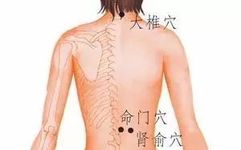There are many acupuncture points in the human body, among which 9 are the most commonly used in health preservation and disease treatment. These points are frequently recommended for moxibustion, as they can regulate the spleen and stomach, support the vital energy, and strengthen the foundation, making them applicable for 90% of diseases.
1. Da Zhui (Governing Vessel 14): The “Sun” of the human body that dispels cold and supplements Yang.
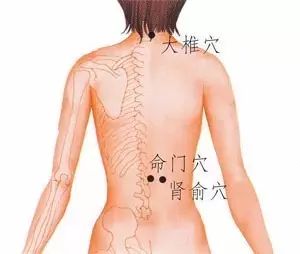
Our body has an acupuncture point that nurtures Yang energy—Da Zhui. By using moxibustion on this point, we can activate our internal “little sun,” generating continuous energy and invigorating the Yang energy throughout the body, thus enhancing immunity!
Da Zhui is traditionally known in TCM as the “Meeting of All Yangs” and is considered the “Yang among Yangs” in the human body. It is strategically located and plays a crucial role in connecting the upper and lower parts of the body. If Da Zhui is blocked, it can obstruct 7 meridians: the Governing Vessel, Bladder Meridian, Large Intestine Meridian, Small Intestine Meridian, San Jiao Meridian, Gallbladder Meridian, and Stomach Meridian, highlighting its importance for health.
The diseases treated include: 1. Wind-cold common cold, runny nose, cough. 2. Wind-damp fatigue, postpartum conditions. 3. Allergic eczema, rhinitis, asthma. Additionally, Da Zhui has a significant antipyretic effect; moxibustion on Da Zhui can prevent and treat colds, bronchitis, pneumonia, and other upper respiratory infections, and it can also be used for the prevention and treatment of emphysema.
2. Ming Men (Governing Vessel 4): The Fire of Life, Supplementing the Innate Foundation!
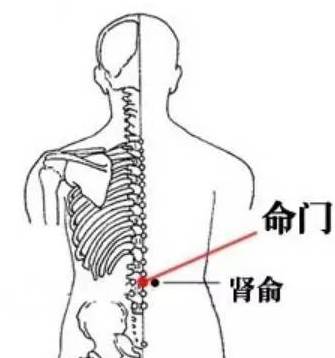
The fire stored in Ming Men is the root of Yang energy in the body, the source of vitality, and it plays a warming and promoting role in the physiological activities of all organs. Thus, it is said that “the Yang energy of the five organs cannot be generated without it,” promoting the functions of the organs and facilitating the metabolism of fluids, regulating the opening and closing of the kidneys.The fire of Ming Men is the root of Yang energy in the body, the driving force behind the functions of the five organs. Prolonged illness harming the kidneys, aging, or excessive sexual activity can lead to kidney Yang deficiency and a decline in Ming Men fire. Clinical manifestations of Ming Men fire decline include symptoms of kidney Yang deficiency, such as fatigue, pale or dark complexion, aversion to cold, impotence in men, and infertility in women due to cold in the uterus.
3. Zhong Wan (Ren 12): Treating All Spleen and Stomach Disorders
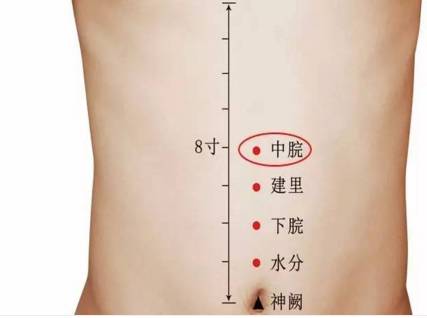
Zhong Wan is located in the middle of the stomach, occupying the main part of the stomach, thus it is the most effective point for treating spleen and stomach diseases. Stimulating Zhong Wan enhances gastric motility, resulting in the pylorus opening and a slight elevation of the lower stomach margin. It can also improve the body’s immune capacity, enhancing the phagocytic activity of macrophages.
Zhong Wan is the mu point of the stomach meridian and a meeting point of the eight meeting points, connecting the hand Taiyang, Shaoyang, foot Yangming, and Ren meridians. The diseases treated include: digestive system disorders such as bloating, diarrhea, abdominal pain, borborygmus, acid reflux, vomiting, constipation, jaundice, and it is also effective for general stomach issues, loss of appetite, dizziness, tinnitus, acne, fatigue, and neurasthenia.
4. Tian Shu (Stomach 25): The Janitor of the Intestines

Tian Shu is the mu point of the large intestine, where the Yangming qi emerges. It regulates the intestines, promotes qi movement, and aids digestion, making it a crucial abdominal point. Numerous experiments and clinical validations have shown that acupuncture or moxibustion on Tian Shu significantly improves intestinal function and alleviates various symptoms caused by intestinal dysfunction.
In addition to moxibustion, massage is also an excellent method to stimulate Tian Shu. The massage technique involves placing both palms flat on the abdomen, with the middle fingers aligned with the navel, applying slight pressure, and moving in a clockwise direction until a warm sensation is felt in the abdomen. Regular massage can promote intestinal peristalsis, enhance gastric motility, and regulate constipation, treat bloating, intestinal sounds, dysmenorrhea, and nephritis.
5. Shen Que (Ren 8): A Perfect Acupuncture Point
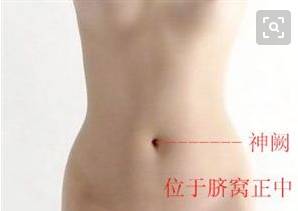
Shen Que is a perfect acupuncture point that can aid in weight loss and beauty while harmonizing various ailments! Moxibustion on Shen Que has the effects of tonifying the spleen and kidneys, benefiting vital energy, and anti-aging, as well as revitalizing cells, moisturizing the skin, and tightening the skin. Because it enhances the body’s resistance to disease, it can also be used to strengthen the body of those who are weak and sickly, and rejuvenate the elderly.Shen Que has weight loss effects; moxibustion on it can accelerate metabolism and promote fat elimination. Similarly, if there is edema and difficulty urinating, moxibustion can also be applied here.
When addressing women’s issues, we often include Shen Que, as women tend to have a cold constitution, leading to coldness in the lower body. Moxibustion on Shen Que can warm and tonify the lower body, dispelling cold. Shen Que is located on the Ren meridian, the sea of Yin, representing the Yang within Yin, corresponding to the body’s defensive qi and nutritive blood.Historically, people have practiced warming the navel and moxibustion on it to dispel cold and harmonize the defensive and nutritive qi, achieving remarkable effects.
6. Qi Hai (Ren 6): One Point Warms the Whole Body
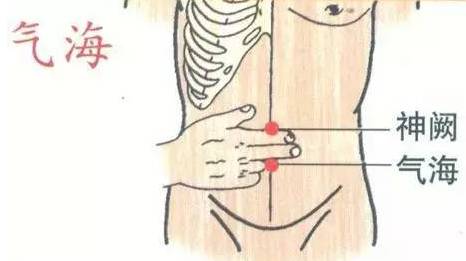
There is a saying, “Qi Hai warms the whole body,” which vividly illustrates the function of Qi Hai. Qi Hai is located between the two kidneys and is connected to the body’s original qi, serving as the source of vitality. Qi Hai is the gathering place of congenital qi, the foundation of original Yang, and the source of life energy, with the function of nourishing original qi and stabilizing Yang. Anyone with insufficient original qi can improve their condition by stimulating this point. Stimulating this point can invigorate the metabolism of qi and blood in the organs and meridians, ensuring continuous circulation and sustaining life. Ancient texts describe Qi Hai as the “Sea of Vitality” for men, indicating it is the source of energy. Therefore, when Qi Hai is abundant, all diseases can be treated, and one can maintain strength.
7. Zu San Li (Stomach 36): Harmonizing the Spleen and Stomach, Supplementing the Postnatal Foundation

Zu San Li is one of the most prominent acupuncture points in the human body, known by both experts and novice moxibustion enthusiasts. Located four fingerbreadths below the knee, it has the functions of regulating the spleen and stomach, tonifying qi, dispelling wind and dampness, and supporting the righteous qi while expelling pathogens. This “star point” is also used for conditions like cold in the uterus, chronic gynecological inflammation, and poor follicle development.
Most moxibustion treatments for women’s diseases require moxibustion on Zu San Li. Due to women’s physiological characteristics, they often experience qi and blood deficiency, which is the root cause of many gynecological diseases. Moxibustion on Zu San Li can harmonize the spleen and stomach, enhancing the “transportation and transformation” ability of the spleen and stomach, thus improving women’s qi and blood deficiency, addressing the root cause of gynecological diseases.
8. San Yin Jiao (Spleen 6): The Anti-Aging Point for Women

For women, San Yin Jiao is particularly important and can be considered the “anti-aging point”. It is a “miracle drug” for gynecological diseases, sometimes referred to as “female San Li.” Regular moxibustion or massage of this point can help women maintain youth, delay aging, and postpone menopause. San Yin Jiao is the intersection of the spleen, liver, and kidney meridians, regulating menstruation and improving skin condition. Since the spleen generates qi and blood, governs blood, the liver stores blood, and the kidneys produce qi and blood, as long as women have sufficient qi and blood, issues like irregular menstruation will disappear. In fact, skin issues like spots, acne, and wrinkles are often related to menstrual irregularities.
9. The First Choice for Kidney Supplementation: Tai Xi (Kidney 3)
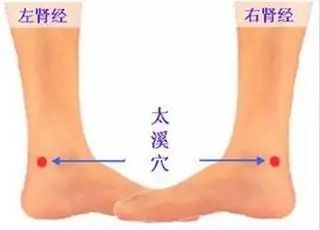
Tai Xi is located in the depression behind the inner ankle. It is a place of abundant original qi in the body, referred to by ancient physicians as one of the “Nine Points of Returning Yang”.
Tai Xi is the source point of the kidney meridian, where the original qi of the kidney flows and resides. The kidneys store essence and differentiate Yin and Yang, so whether it is kidney essence deficiency or insufficient kidney Yin and Yang, Tai Xi can nourish them.
The diseases treated include: kidney Yin deficiency, Yin deficiency with excess fire leading to sore throat, oral ulcers, tinnitus, hearing loss, insomnia, forgetfulness, or kidney Yang deficiency presenting as cold limbs and lower limb edema. Moxibustion on Tai Xi can prevent and treat these conditions.
The above 9 acupuncture points can address 90% of diseases.Both men and women can benefit from moxibustion, as it can comprehensively improve physical health by addressing the root causes.
Moxibustion duration: 15-20 minutes for each point on the limbs, 30-50 minutes for each point on the waist and abdomen. You can purchase multiple moxibustion boxes to use simultaneously; if you cannot complete the moxibustion in one session, you can split it over two days. The order of moxibustion is back, abdomen, and legs, from top to bottom and left to right. You can perform moxibustion daily for several days, as it is generally recommended to rest for 1-2 days each week.
When medicine is ineffective and acupuncture is insufficient, moxibustion must be applied! Although moxibustion is beneficial, it should not be done blindly. Click the link below to follow 【Moxibustion Code】 for free.
Due to changes in WeChat's push rules, if you do not want to miss the daily content of 【Moxibustion Code】, remember to click "Like" and "View" below.

